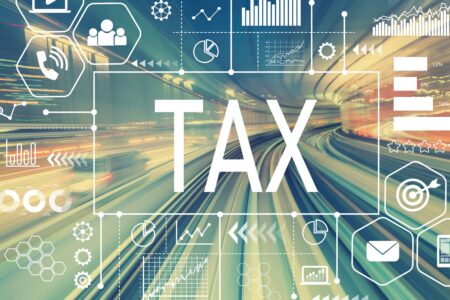Now’s the time to consider potential tax saving opportunities
22 February 2019
As we approach the end of the tax year on 5 April, you may be able to choose the tax year in which your income, gains or reliefs fall. This might save you some tax, or defer when your tax bill needs to be paid.
Income
The personal allowance
The personal allowance, currently £11,850, increases to £12,500 for 2019/20. However, if your income exceeds £100,000, the allowance is reduced by £1 for every £2 above £100,000. It is therefore completely withdrawn if your income exceeds £123,700 this year and £125,000 for 2019/20. The way it is withdrawn means a marginal tax rate of 60% on your income in these bands.
It makes sense to either bring forward or defer income to avoid these bands. Even if this means you are subject to tax at the 45% additional rate (on income over £150,000) in one year, this is preferable to the 60% marginal rate. Higher rate taxpayers can save tax of up to £5,000 by doing this.
Basic rate taxpayers should consider making sure the allowance is used – even if for example the income remains undrawn from their company. The effect on the amount of National Insurance (NI) payable and when it is due needs to be taken into account, but it’s not always bad news!
Instead of having income of £125,000 for each year, if you received £100,000 in one and £150,000 in the other you might save tax of £5,000!
Dividends
This year the first £2,000 of dividends you receive are tax free. The allowance covers dividends from quoted and private companies. The allowance is lost if you don’t use it.
Child benefit
It’s usually best to register entitlement to child benefit, even if this is effectively paid back through the High Income Child Benefit Charge. This is because claiming the benefit makes the year count for state pension purposes.
Pension contributions
It’s better to make pension contributions by 5 April 2019, unless your marginal tax rate will be higher next year (2019/20), or you don’t have any available pension relief.
Unless your income exceeds £150,000, the maximum allowed annual pension contribution is £40,000, but you can also bring forward unused relief from the previous three years. This is the amount by which any contributions made by you and your employer fell short of the annual limit. Making contributions before April 2019 could mean that you will be able to take advantage of unused relief for 2015/16 which will otherwise be lost when the new tax year begins.
Lower pension contribution limits can apply – notably:
- those in ‘drawdown’ are limited to £4,000 a year, and
- if your income exceeds £150,000, the £40,000 allowance is reduced by £1 for every £2 of that excess, down to a minimum allowance of £10,000.
- tax-eligible contributions are limited to the higher of your earnings from employment or self-employment and £3,600.
The maximum allowed pension contribution is shared between the employer and the employee.
Drawing your pension
Those in defined contribution ‘DC’ (formerly known as money purchase), as opposed to defined benefit, ‘DB’ (or final salary) schemes should be able to access their funds from age 55.
If when you take money from your pension, your pot is worth more than the pensions lifetime allowance (currently £1.03m), you may have to pay a special tax charge. This applies to both DC and DB schemes.
You can take a tax free lump sum of up to 25% of the value of your fund (or the lifetime allowance if your fund exceeds it). Income payments are taxed as income and therefore liable at your marginal tax rate for the year. You don’t have to take all the tax free cash in one lump sum – instead you may wish to spread it over a number of years.
Once you have used up the lifetime allowance the special tax charges are 25% for income and 55% for lump sums. For a 40% taxpayer the net effect is the same, they get to keep 45% of both a lump sum and income payment (40% tax on the 75% remaining after the special tax charge is another 30% – making 55% in total).
The lifetime allowance of £1.03m increases to £1.055m on April 2019, and there are a number of elections that can mean this is increased. Some of these elections require that no further pension contributions are made, so those affected should beware of being automatically enrolled in a workplace pension scheme.
It is worth trying to manage pension payments in conjunction with your other income, allowances and gains to minimise the impact of the higher and additional tax rates, and avoid loss of the personal allowance (see above).
Because your pension pot is outside your estate for inheritance tax (IHT) purposes, it might make sense to spend other savings, such as those in your ISA, in preference to drawing your pension.
The idea is that when you die, what’s left in your estate is a pension pot exempt from IHT. You can choose who to leave your remaining pension pot to, and if you die under 75 it’s entirely tax. If you die aged 75 or over, your beneficiaries can draw their shares from your pot as they wish – either in one year or over several – and whatever they take is taxed as their additional income for that year.
Charitable giving
Unless your marginal tax rate will be higher for 2019/20 it’s better to do any charitable giving by 5 April 2019. You can elect for gift aid cash donations made from 6 April 2019 until the earlier of the date you file your 2019 tax return and 31 January 2020, to be treated for income tax purposes as though they were made in 2018/19.
Charitable gifts of cash which are supplemented by a gift aid declaration are treated as being made net of basic rate tax. The charity reclaims the basic rate tax from HMRC and higher/additional rate taxpayers can claim higher or additional rate tax relief, usually through the tax return. If you make a gift aid declaration but your income tax and capital gains tax is not enough to cover the tax credit, you will have to pay the difference to HMRC.
Gifts of listed securities and land can also qualify for income tax relief, and in addition you are not subject to capital gains tax on any gain which may otherwise arise on their ‘disposal’ to the charity.
Property income
Individuals who currently receive gross rents that do not exceed £150,000 will by default be taxed on their net cash receipts, as opposed to the accruals basis. This will not always be preferable, so they may want to elect that it doesn’t apply.
Some landlords who let residential property personally may wish to consider whether it would be preferable to set up a company and transfer their portfolio to it to conduct future lettings.
Gains
Deferring a disposal that gives rise to a capital gain greater than the annual capital gains tax (CGT) exemption (£11,700 for 2018/19) until after 5 April means CGT would be payable a year later.
Entrepreneurs’ relief
Deferral might also mean that you become eligible for entrepreneurs’ relief or investors’ relief (where gains are taxed at 10% rather than 20%) because these reliefs require the shares to have been held for minimum periods. The ‘lifetime limits’ on gains that can qualify for entrepreneurs’ and investors’ relief are both £10m.
Gains eligible for entrepreneurs’ relief are those realised by individuals, and in some instances trustees, on the disposal of interests in a business (trade, profession etc.), assets used for such a business, or ordinary shares subscribed for in an unlisted trading company of which the individual is at least a 5% shareholder and an office holder.
Gains eligible for investors’ relief are those realised by individuals, and in some instances trustees, on the disposal of ordinary shares subscribed for in an unlisted trading company, but there is no minimum holding and the investor and anyone connected with him must not be an employee or remunerated director. Those contemplating a disposal should ensure they qualify as gains are otherwise likely to be taxed at 20%.
Negligible value claims
If any assets have become of negligible value, consider a loss claim for CGT purposes. In some circumstances income tax relief may be available instead.
Bed and breakfasting
‘Bed and breakfasting’, i.e. selling shares or securities to realise a gain covered by losses or the annual exemption and then buying back the same shareholding, is ineffective if the purchase takes place within 30 days. However, this doesn’t apply to shares ‘reacquired’ by your spouse or ISA.
Inheritance tax
There are a number of exemptions for lifetime gifts that don’t depend on surviving at least seven years. Giving sooner rather than later is often preferable. Gifts of assets that grow in value can save inheritance tax (IHT) even if the donor dies within seven years, because the growth in value is in the recipient’s estate, not that of the donor. You can give:
- up to £3,000 each tax year, and any part of this allowance not used in the preceding year, a
- up to £250 each to any number of people each year, and
- regular gifts out of income provided, your remaining after-tax income is sufficient to maintain your usual standard of living. Such gifts are exempt without limit.
Don’t forget that gifts can result in a CGT liability.
Tax-efficient investments
EIS and SEIS
Income tax relief at 30% is available on up to £1m each tax year subscribed for shares in qualifying Enterprise Investment Scheme (EIS) companies, provided you are not ‘connected’ with the company. Any gain on their sale is exempt from CGT if the shares are held for at least three years. £500,000 may be subscribed in one tax year and claimed in the preceding tax year if sufficient EIS relief remains unused in that year.
Income tax relief at 50% is available on up to £100,000 each tax year subscribed for shares issued by smaller companies qualifying for Seed Enterprise Investment Scheme (SEIS) relief provided the shares are held for at least three years. Any gain on their sale after three years is exempt from CGT.
CGT on a gain made in the period beginning 12 months before the subscription and ending 36 months after it may be deferred by making EIS or SEIS investments, even if you are connected with the company.
Venture Capital Trusts (VCTs)
Income tax relief at 30% is available on up to £200,000 each tax year subscribed for shares in VCTs, provided the shares are held for at least five years. Subject to limits on the size of holdings, dividends and gains relating to shares in VCTs are exempt.
Social enterprises
Income tax relief at 30% is available on an investment (up to £1m) in ‘social enterprises’.
ISAs
No tax is payable on income and gains on investments within an Individual Savings Account (ISA). You can invest up to £20,000 in total each year.
A surviving spouse or civil partner may claim an extra ISA allowance equal to the value of ISA holdings of a deceased partner with whom they were living at the time of the death.
The ‘help to buy’ Lifetime ISA is available for those saving to buy their first home. Those aged between 18 and 40 may save up to £4,000 a year until they reach the age of 50 and receive a government bonus of 25% on their savings. The money can be invested as cash or in stocks and shares, as with ISAs. It may be used towards the cost of a first home worth up to £450,000 or taken out tax-free after the investor is 60.
Non-doms – Action by 5 April 2019!
Many long-term resident non-domiciliaries have already become deemed domiciled for income tax, CGT and IHT purposes, as a result of the changes that applied from 6 April 2017. Others will become deemed domiciled from 6 April 2019 if they’ve been resident for 15 out of the previous 20 tax years, or if they were born in the UK with a domicile of origin in the UK and are resident in the UK (for IHT if they were UK resident in the previous year as well).
Unless you were born in the UK with a UK domicile of origin, if the remittance basis applied to you for any year before 2017/18, you may ‘cleanse’ any offshore account that contains unremitted income or gains by transferring out the other funds – now clean – to another offshore account by 5 April 2019. Cash can then be remitted to the UK from that account tax-free at any time. Of course, the funds left in the cleansed account remain taxable if remitted to the UK.
Those who will become deemed domiciled in the UK after 5 April 2019, because of having been UK resident for 15 years out of the 20 years then ending should consider what action might be taken to minimis the tax effect.
Specific advice should be obtained before taking action, or refraining from taking action, in relation to the above. If you would like advice or further information, please speak to your usual Shipleys contact.
Copyright © Shipleys LLP 2019


















